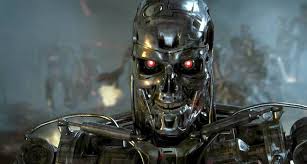Trading places with machines, brick by brick
- The Australian
- SIMONE FOX KOOB Journalist Sydney @SimoneFoxKoob

Apprentice bricklayer Henry Crossman, at work in Greenacres, Adelaide: “You’ll still need us for the fiddly bits, like window sills”. Picture: Kelly Barnes
Perth bricklayer Hadrian seems like the perfect tradesman: he doesn’t take breaks, never complains and boasts painstaking accuracy to the nearest half-centimetre.
But it helps that Hadrian is a fully automated machine. The revolutionary robot bricklayer is the brainchild of engineer Mike Pivac and his ASX-listed Perth company Fastbrick Robotics, which has just released its last prototype before it hits the commercial market next year.
It is an exciting time for Perth-born Mr Pivac, who said the technology would compete “very, very strongly with traditional bricklaying” as the rollout goes global.
“There is no price just yet, but I’m happy to say we are expecting a very high return on investment,” he said.
“We believe there is need around the world for about 5000 of these machines.”
It’s a goal that could transform the trade altogether. Prototypes of the Hadrian work at a rate of about 225 bricks laid an hour, four times faster than humans, and the finalised commercial product, the Hadrian X, is expected to lay 1000 bricks an hour.
Fastbrick Robotics believes the machine will be able to build a four-bedroom house in less than two days by working around the clock.
It works by turning 3D architects models into code, which calculates the location of each brick in the building. Once the information is fed to the machine, laser-scanning technology allows it to lay each brick into position from a fixed location.
The invention of the machine was in part a reaction to the skills shortage of bricklayers across the country, particularly in parts of Western Australia, due to improved housing starts, an ageing bricklayer workforce and low apprenticeship starts.
Bricklayers have been at the top of the Immigration Departments skilled occupations list to fill the shortages, and some are now charging up to $2 a brick.
Apprentice bricklayer Henry Crossman, 19, believes there will always be a need for bricklayers and is not overly worried about the imminent mechanisation of his workforce.
The South Australian teenager, who has 18 months left of his four- year apprenticeship, lays about 50 bricks an hour.
“You’ll still need us for the fiddly bits like window sills and they can’t get down tight sides like we can,” Mr Crossman said.
“I can see how they would be really good for big commercial sites, when you have 100m-long panels that need to be done.
“Once I have my own business, I wouldn’t buy one — you still have to have humans to run them so I don’t see the point.”
Geoff Noble, the chief executive of the Australian Brick and Blocklaying Training Foundation, said he was keen to see the new machine for himself, to work out “how it works and what it adds” to the industry.
“I’m in favour of any technology … I think automation is great. We don’t want people to live in the past,’’ he said. “We are looking at efficiencies all the way through to installation.’’
While he still held concerns about the machine, including how consistent the robots would be across the industry, he saw the merit in combining the work being achieved by new technology, and that being done by master tradesmen: “There will always be a place for that.”

